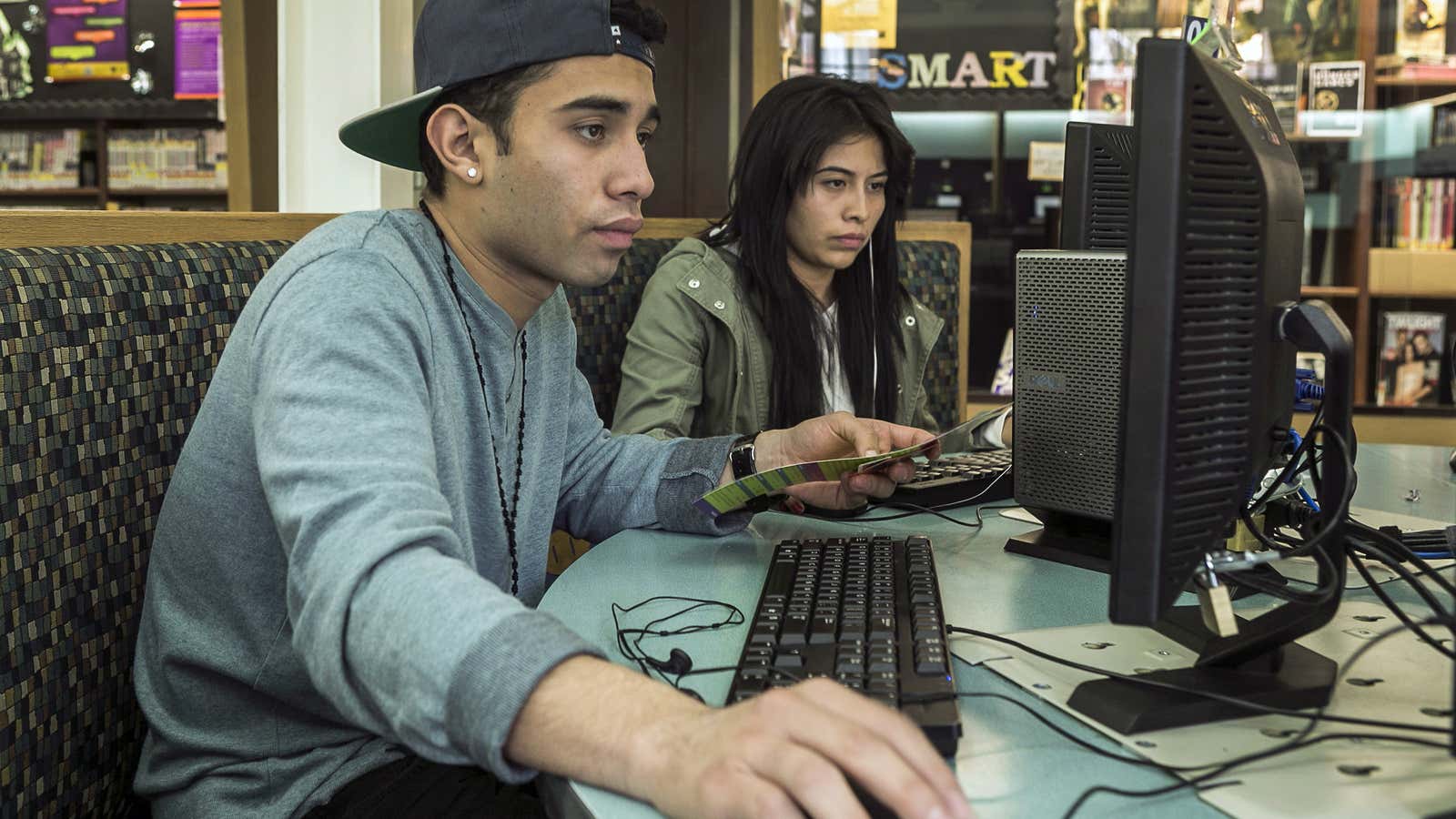Online learning is having a substantial impact on classrooms across the country and around the world. The recent announcement of the College Board’s partnership with Khan Academy to make online SAT test preparation available for free is a good example. Now, all students—regardless of socio-economic status—will have access to high-quality tools that will help them prepare for the redesigned SAT.
As a director of a national after-school learning company, you might think I’d be unhappy or nervous about such a partnership. On the contrary, I welcome it. Khan Academy does fantastic work—if they had been available, I would have integrated their material into lesson plans when I was a high-school teacher, and I used some of it myself in business school. With solid subject matter and engaging videos, they are filling a need for high-quality content. And more content means more knowledge delivered, which is a net gain for students across the country.
However, there are limits to what digital learning technology can do, and we have to remember that great teaching has always been a primary driver of academic growth. As teachers have long understood on a gut level, if they have the opportunity to provide a student with continued personalized instruction they can instill learning alongside confidence. Using these two key strategies—individualized instruction and confidence building—teachers can help many students go from well below national average on standardized tests to the top of the score chart.
Indeed, there is a steadily increasing body of evidence demonstrating how strong teaching can deliver huge impact. As Benjamin Bloom found in his paper, “The 2 Sigma Problem,” that students who receive individualized instruction typically perform two standard deviations better than those who don’t. This means they score 98% better than average.
Professor David Laude is similarly showing what this can look like at the college level. Before becoming senior vice provost of the University of Texas at Austin, he identified 50 students who exhibited indicators common among students who had failed his Chemistry 301 course in the past—prominent among these indicators were SAT scores 200 points below those who do well in the course. With targeted instruction and mentorship, these likely to fail students ended up getting As and Bs in a hard course at a highly selective university.
Rock-star teachers like professor Laude consistently interweave the two strategies of individualizing instruction and instilling confidence. By individualizing instruction, a teacher is able to identify precisely where a student is struggling and provide them with the right concept and practice so they can learn the idea.
By way of simplified example, if a student can’t do an algebra problem with two equations and two unknowns because they don’t fully get fractions, the teacher can teach fractions, then the algebra. The student starts getting the fractions questions right and the teacher celebrates that student’s hard work and growth. They come back to the algebraic equations and now not only have the necessary foundational skills, but also the confidence to tackle the problem because they know they’ve figured out something they didn’t know before and that they can do it again. This personalized approach, enhanced by the best of digital learning technology, allows learners to internalize foundational concepts and develop a deep-seated understanding of the curricula.
How academic growth occurs is rooted in the “growth mindset” concept that leading educational psychologist and Stanford professor Carol Dweck describes in her book and TED Talk. Growth mindset is the idea that intelligence and abilities are not fixed entities, but instead qualities we can develop through dedication and hard work. This concept and philosophy serves as the foundation of individualized instruction and tutoring. Personalized instruction can help a student achieve their goal, whether that be gaining a better understanding of algebra or looking for 400 points on the SAT to get into that dream school.
Now, it’s valid to argue that while tutoring is a better choice, it’s cost is prohibitive for many families. For those individuals, there are many great alternatives. Students who may not be able to afford a personal tutor should not hesitate to approach their teachers for extra help. There’s always a dedicated teacher who will come in early or stay late to help a student master a concept or discuss a term paper. Additionally, parents and students should look in to afterschool programs. For example, Boys and Girls Clubs of America has great education programs that focus on academic enrichment and engagement as well as targeted dropout prevention. Many local religious and community organizations offer excellent tutoring as well, like the Catholic Community Services of Western Washington or Philadelphia Futures.
I’m excited by the way technology is changing the classroom and providing students with access to needed learning tools and resources. Although providing universal access to academic tools and resources will make a difference for many students across the country, it is ultimately the student and teacher working together that yields deep learning and growth.
